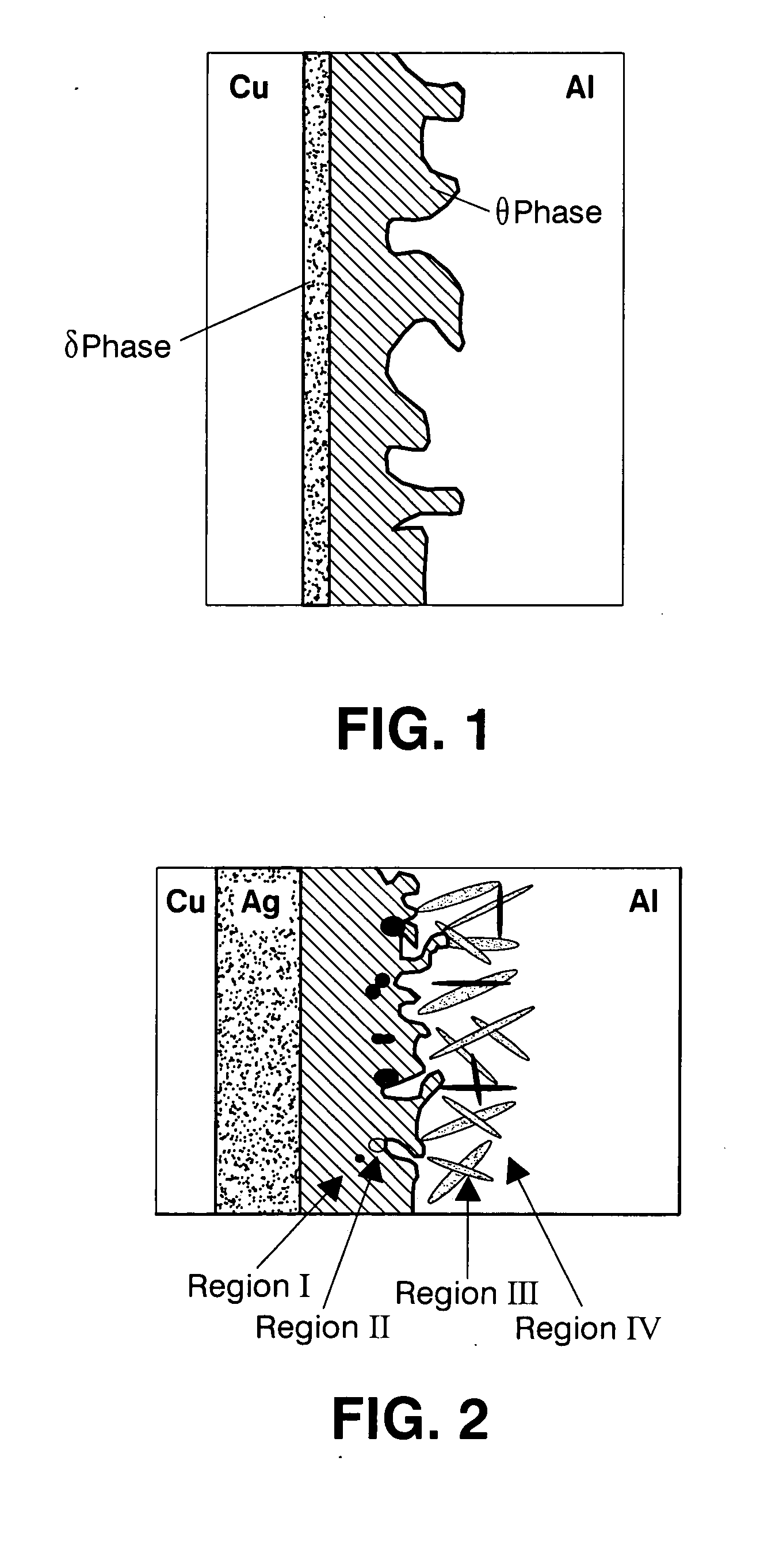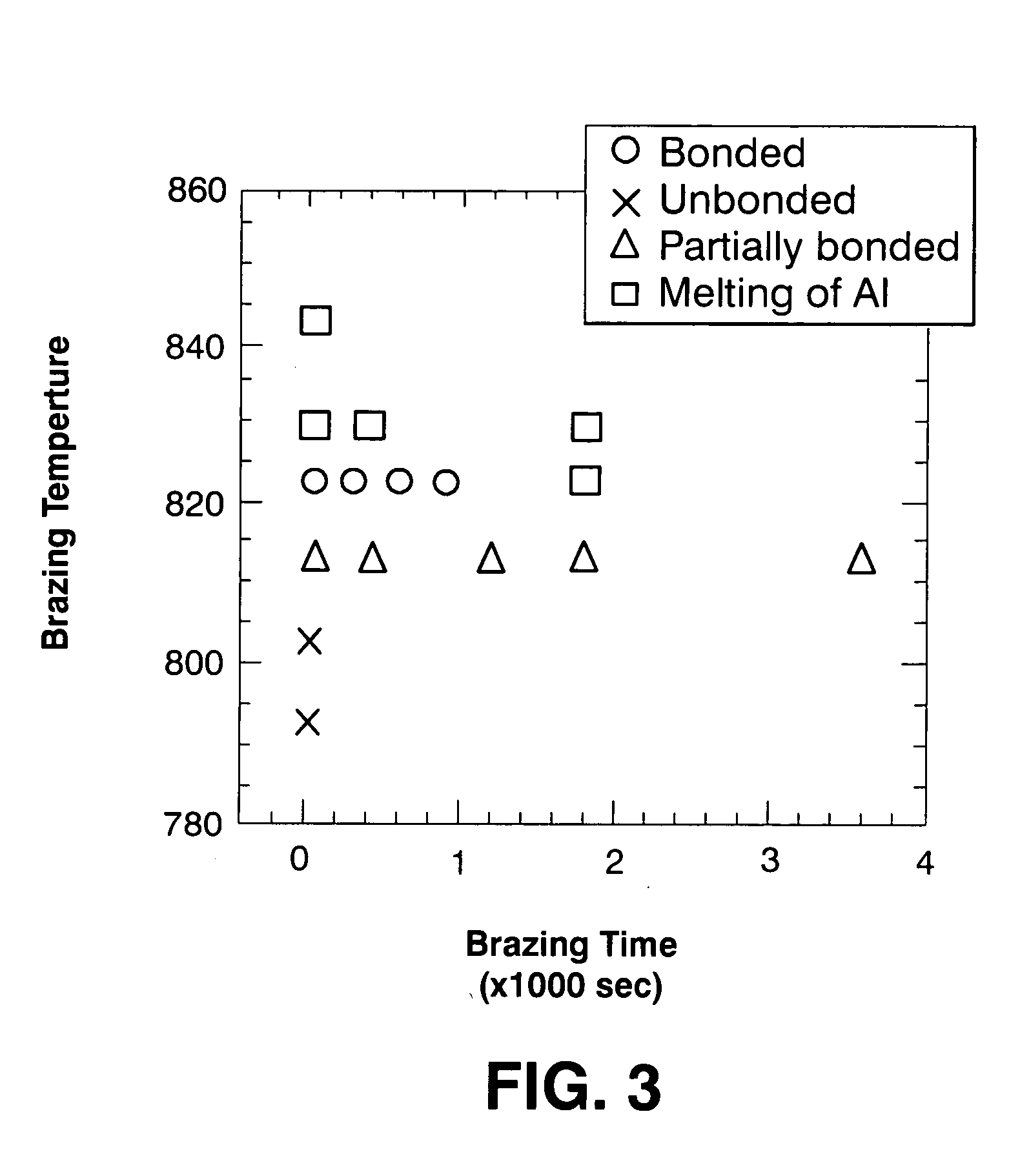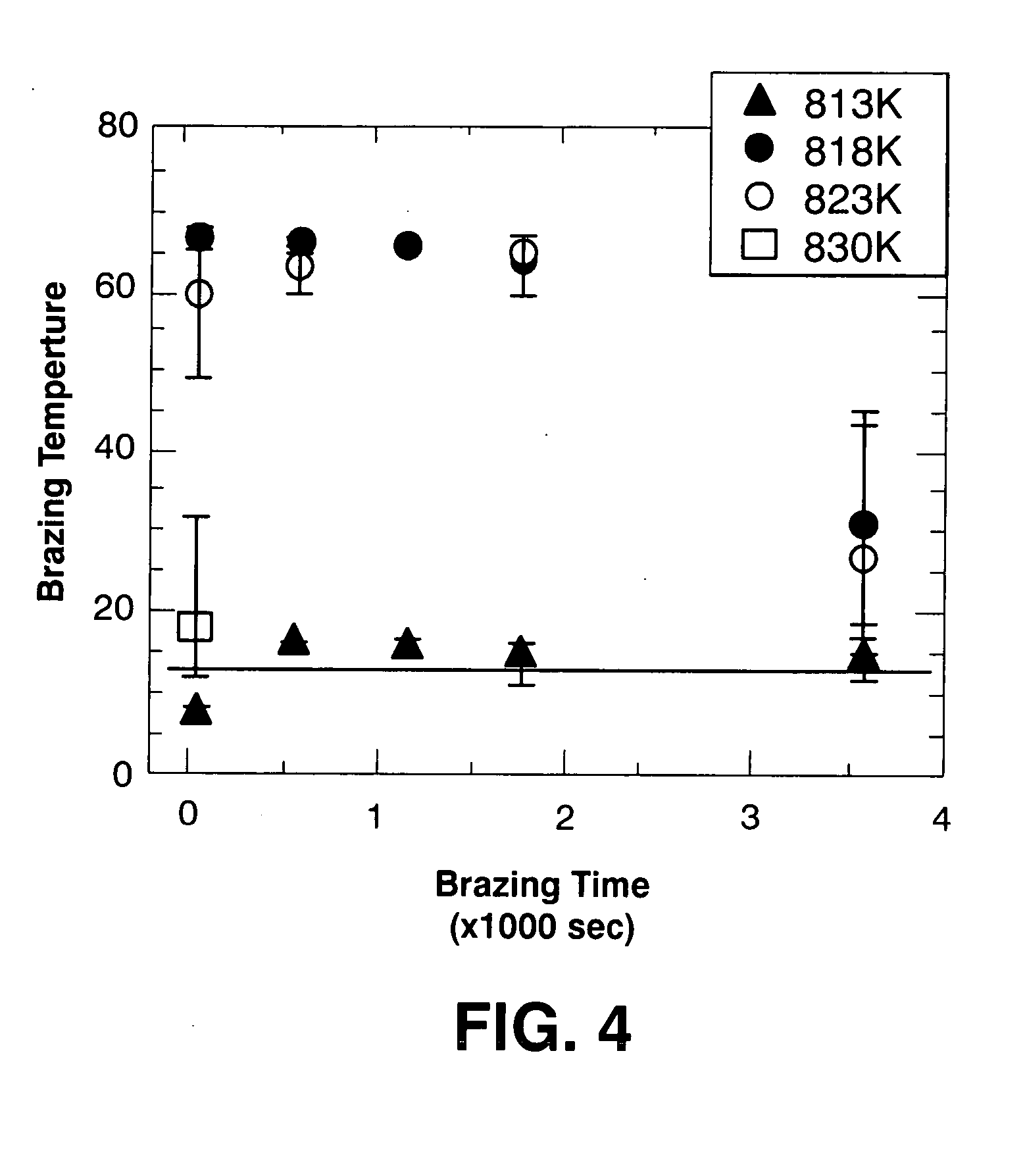Al-Cu bonded structure and method for making the same
a bonded structure and cu-bonded technology, applied in the direction of solvents, manufacturing tools, transportation and packaging, etc., can solve the problems of limited enhancement of heat transfer properties obtainable from these improvements, difficult bonding of large areas or complex shapes, and restrictions on the shape and dimensions of components to be bonded, etc., to achieve stable bond characteristics, superior workability, and superior dimension characteristics
- Summary
- Abstract
- Description
- Claims
- Application Information
AI Technical Summary
Benefits of technology
Problems solved by technology
Method used
Image
Examples
1 embodiment
[0126] 2-1 Embodiment
[0127] The advantages of the thin Al—Cu bonded structure and methods for making the same according to the present invention will be described using a specific embodiment.
[0128] (1) Produce Al—Cu Bond Component
[0129] For this embodiment, a commercially available industrial pure aluminum (A1050) was used for the Al base material. The Ag used as the insert material is a pure silver foil (99.99% purity), which is clad to oxygen-free copper (C1020) and is commercially available as an Ag-clad Cu plate (Ag thickness: 100 microns, Cu thickness: 3 mm).
[0130] First, in order to form an insert layer on the surface of the Cu base material, a mirror finish is applied to the surface of the Cu base material, an Ag foil with a thickness of 100 microns is mounted so that it is in contact with the surface of the Cu base material, and solid-phase diffusion is performed. The diffusion conditions are: diffusion temperature 1038 K (765 deg C.), diffusion time 5 hr, and contact loa...
PUM
| Property | Measurement | Unit |
|---|---|---|
| Temperature | aaaaa | aaaaa |
| Length | aaaaa | aaaaa |
| Fraction | aaaaa | aaaaa |
Abstract
Description
Claims
Application Information
 Login to View More
Login to View More - R&D
- Intellectual Property
- Life Sciences
- Materials
- Tech Scout
- Unparalleled Data Quality
- Higher Quality Content
- 60% Fewer Hallucinations
Browse by: Latest US Patents, China's latest patents, Technical Efficacy Thesaurus, Application Domain, Technology Topic, Popular Technical Reports.
© 2025 PatSnap. All rights reserved.Legal|Privacy policy|Modern Slavery Act Transparency Statement|Sitemap|About US| Contact US: help@patsnap.com



